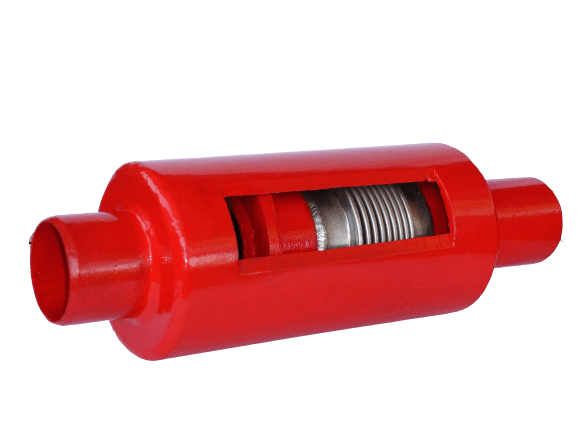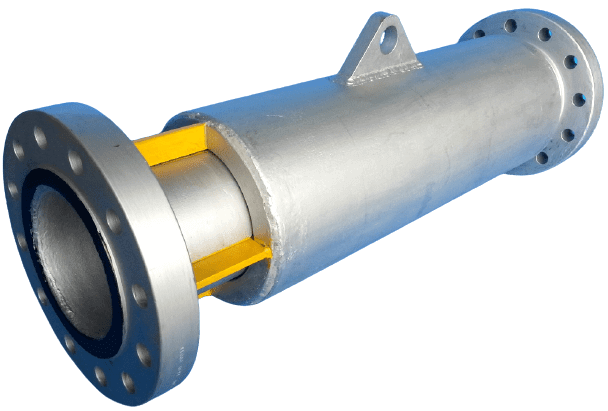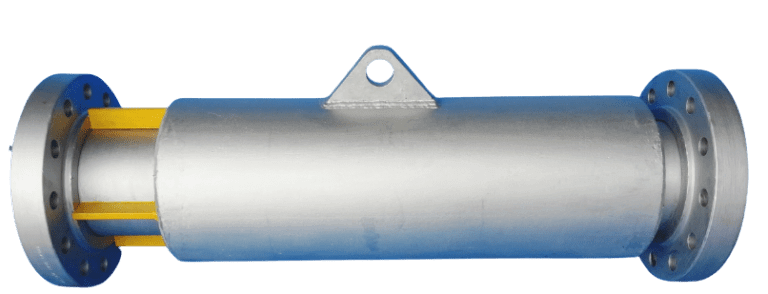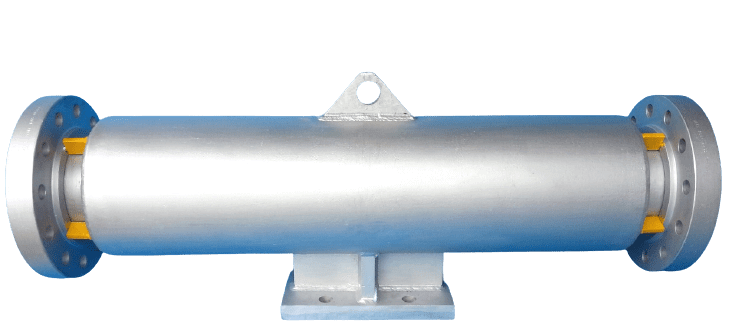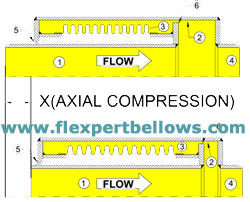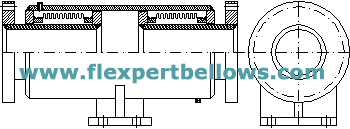Externally Pressurized Expansion Joints
- Home
- /
- Externally Pressurized Expansion Joint
- Absorbs large axial movements without squirm.
- Eliminates main anchors.
- Minimum guiding required for externally pressurized expansion jointsmain anchors
- Heavy duty construction for bellow protection.
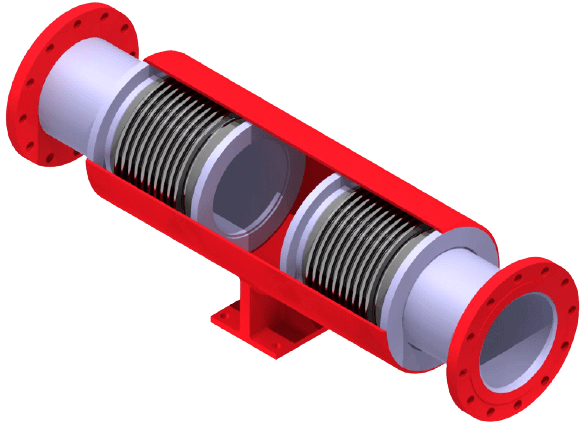
An Externally Pressurized Expansion Joint takes pressure from the outside of the bellows element rather than on the inside as in a conventional expansion joint. In conventional type of expansion joints with internally pressurized bellows it is not possible to accommodate large axial movements due to the squirm associated with the higher bellows length.
The stabilizing effect of the external pressure increases the bellows capacity to absorb high axial movements without squirm making the externally pressurized expansion joints the best solution for applications involving very high axial movements.
The construction consists of a heavy outer pipe which contains the pressure and serves as a shroud to protect the bellows and also functions as pipe-guide. The outer pipe in externally pressurized expansion joints contains the full pressure of the system and if bellows failure occurs the medium does not escape radially outwards, thus protecting the personnel working in the vicinity.
The construction consists of a heavy outer pipe which contains the pressure and serves as a shroud to protect the bellows and also functions as pipe-guide. The outer pipe in externally pressurized expansion joints contains the full pressure of the system and if bellows failure occurs the medium does not escape radially outwards, thus protecting the personnel working in the vicinity.
As the thermal expansion in externally pressurized expansion joints occurs the bellows element gets extended bringing the internal guide rings closer reducing the gap between them and the medium can flow through this joint as if it were not there.The drain vent and purge connection can be provided in the outer pipe to allow the draining of any sediment or residue that may collect or venting of the expansion joint to assure fluid filled pipeline. The drain connection is also an ideal location for a steam trap for joints used in steam applications.
And since its is totally maintenance free expansion joints can be installed in areas where accessibility is limited. Also since there are no sliding parts there is no need of lubrication or repacking.
- The single externally pressurized expansion joint is normally located near an anchor at one end of the long piping run. This joint should be installed with the fixed end adjacent to the anchor.
- And since its is totally maintenance free expansion joints can be installed in areas where accessibility is limited. Also since there are no sliding parts there is no need of lubrication or repacking.
- The single externally pressurized expansion joint is normally located near an anchor at one end of the long piping run. This joint should be installed with the fixed end adjacent to the anchor.
- The double universal expansion joint which is essentially an assembly of two single joints mounted back to back connected by a common casing is installed at the center of the long piping run. This type of double bellows is provided with a support foot which acts as an intermediate anchor.
The externally pressurized expansion joints provide very low turbulence to the flowing medium due to the fact that the internal surface of the pipeline itself works as the liner for this expansion joint. As the thermal expansion in externally pressurized expansion joints occurs the bellows element gets extended bringing the internal guide rings closer reducing the gap between them and the medium can flow through this joint as if it were not there.
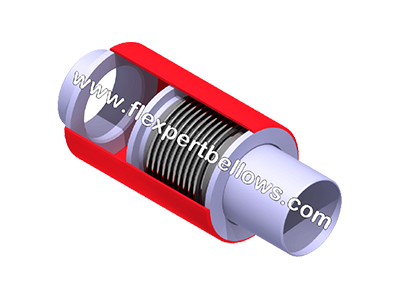
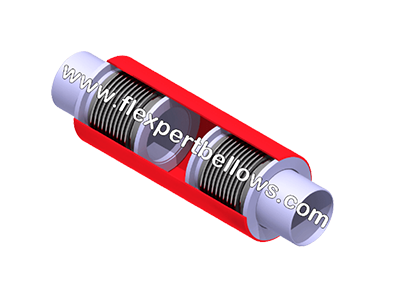
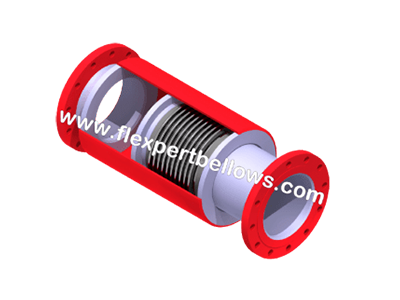
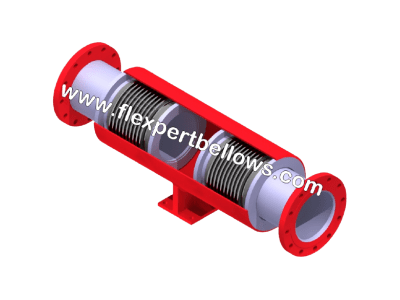
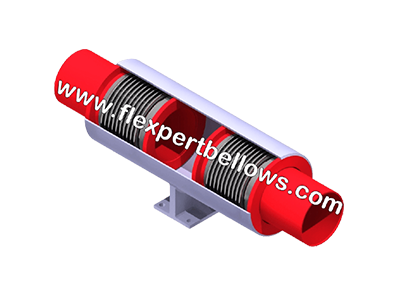
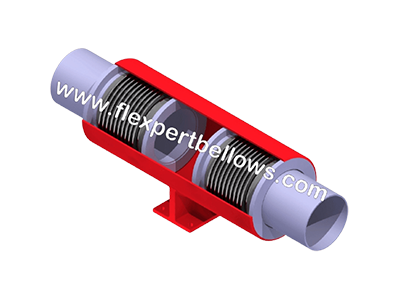
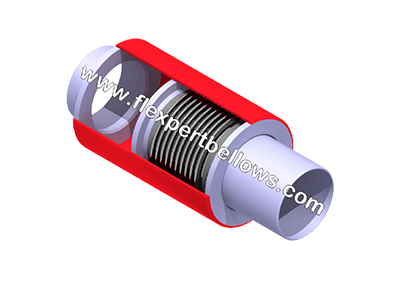
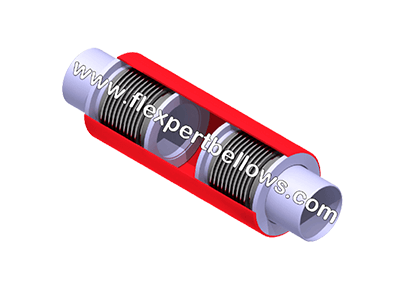
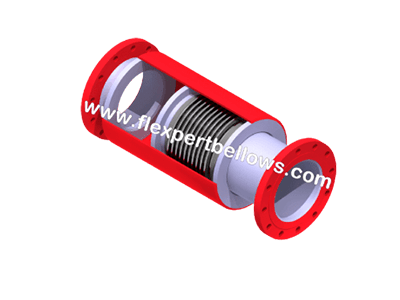
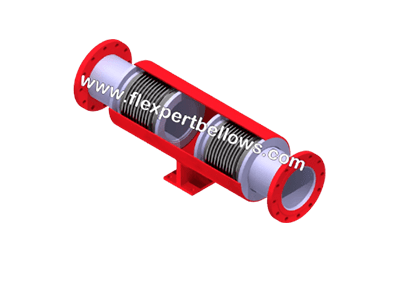
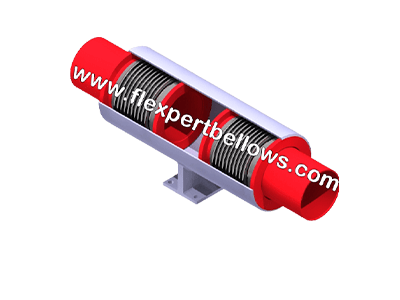
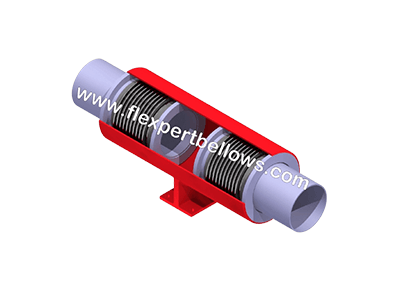
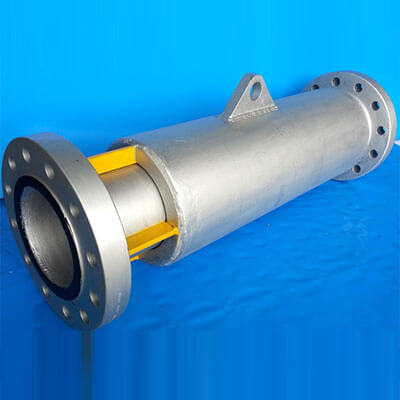
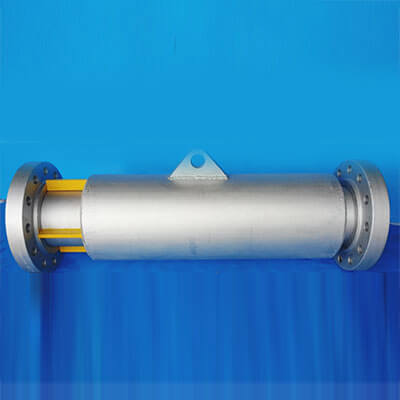
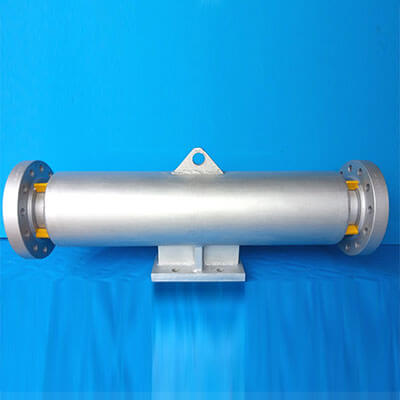
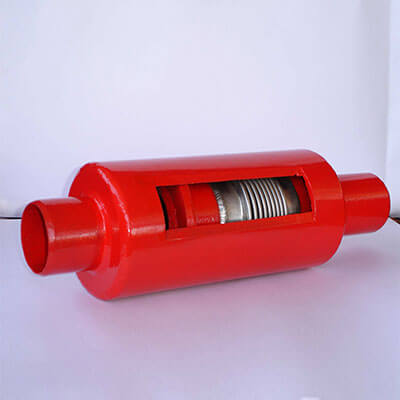
We provide great, on time services to our valuable customers.
Contact Us
- Absorbs axial and lateral movements while retaining the pressure thrust.
- Eliminates main anchors.
- Minimum guiding is required for Externally Pressurized Expansion Joints.
- Flow is streamlined at high velocities due to integral internal sleeve of the Externally Pressurized Expansion Joints

